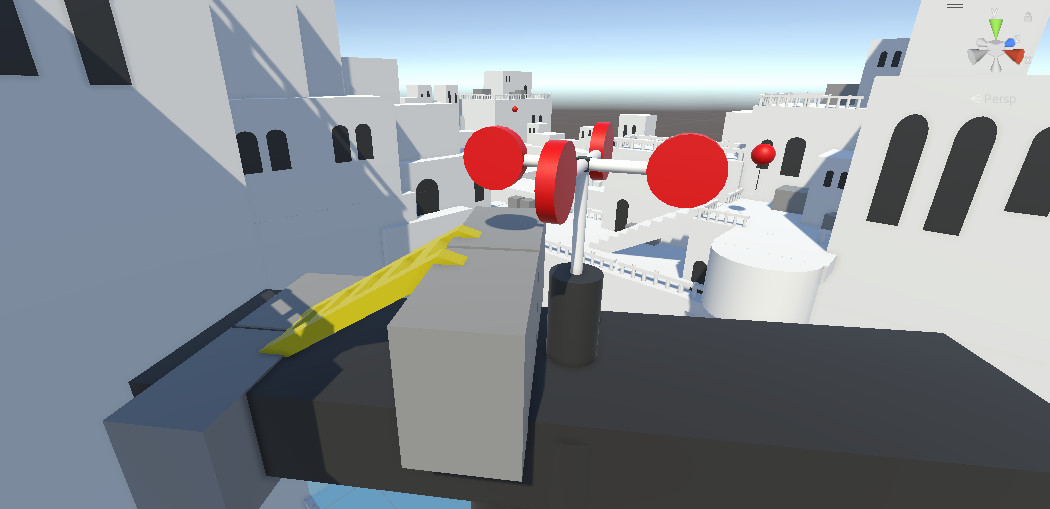
Project description
This study of the award-winning game ‘The Unfinished Swan‘ attempts to mimic the core mechanics of the game. Through analyzing the design pillars found for the game, as well as breaking down the existing game mechanics into tasks, we were able to recreate one of the later levels.
A major part of the game plays out during a completely white level, where you must find your way using your paint. However, we wanted to focus on the second part of the game, where we would be able to show more interesting mechanics, the puzzle platformer part. Here you must use your paint ability to solve your way through the level.
This prototype aims to accurately represent that part of the game, you must use your painting abilities to progress through the level and reach the end. On the way, you may even find hidden balloons to collect.






My contribution
This project was made with Giorgo Alotta and Cartherine Szobel for our Game Design 2 course. This was one of the first major group projects of Game Design, and as such served as an introduction to many aspects of development for me. Here are the main takeaways.
- Teamwork: Splitting up the work to fit what everyone wants to do is vital. This way everyone is motivated to work for the project.
- Time Management: My task seemed to be an easy one at first, however through hardship I had learned that I had majorly underestimated the time cost. Through this project it became clear to me it was important to ask for assistance earlier, and to not spend too much time on one aspect. Additionally, splitting up work into multiple sub tasks can be incredibly useful to show progression for your team.
- New tools: During this task we were introduced to two major aspects of Game Development. the High Concept Document, a concise document that describes the Game Design aspects of the project. HacknPlan an incredibly useful tool for planning and time management, dividing tasks in HacknPlan was not easy at first, but through using it I learned a lot about time management.
My part of the project consisted of the painting and ball throwing mechanic, a vital part of the game. The ball itself is done through Unity’s Particle System, which was a nice learning experience. This way I was quickly able to alter to trajectory, speed, and other characteristics via the editor. It was incredibly important to create something that felt similar to the game, and so it went through many small iterations to make sure it felt right.
On top of that, my other contribution was the second part of the painting, the splash. We knew we wanted the splash to be able to effect things in the level as well, I achieved this through spawning a hitbox when the particle hit something, which would disappear after a bit. The paint splash visual was the main pain point, and I tried many variations of attempting to spawn meshes or directly impacting the meshes that it lands on. The most achievable solution ended up becoming spawning decals, which slowly scale down before disappearing (to reduce lag).

